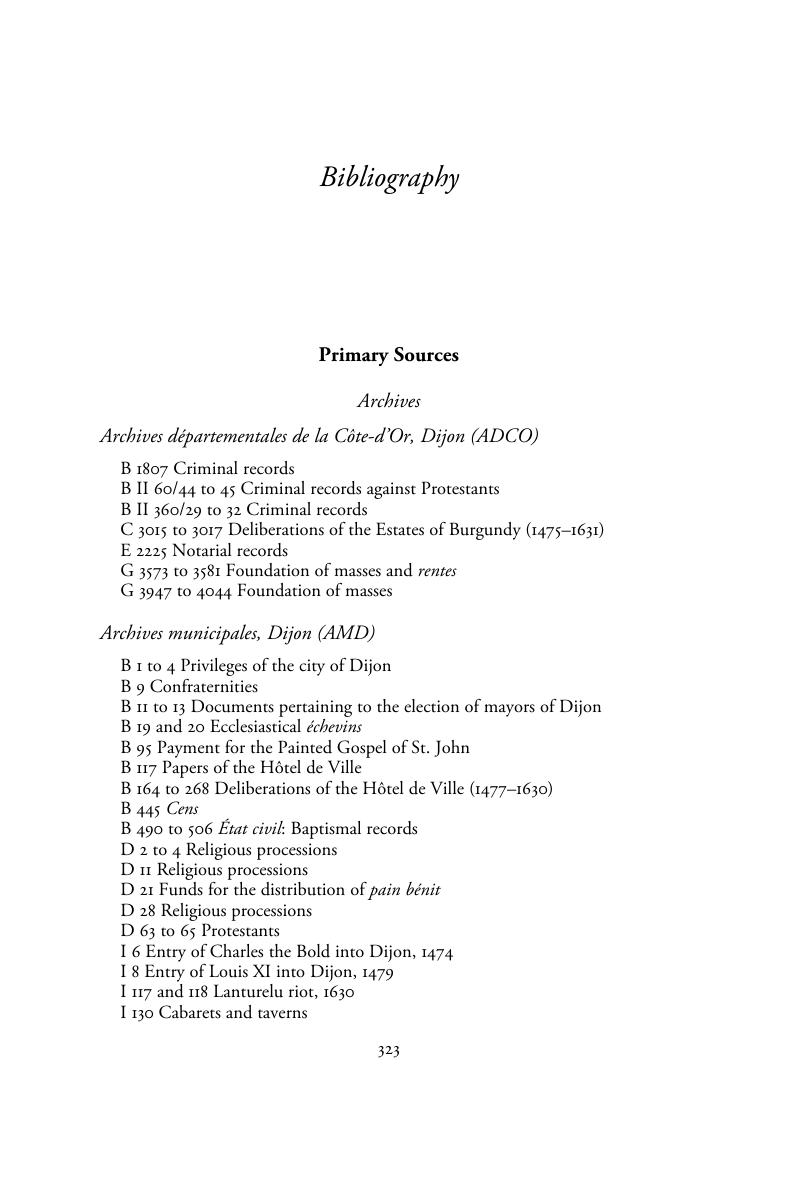Book contents
- The Politics of Wine in Early Modern France
- New Studies in European History
- The Politics of Wine in Early Modern France
- Copyright page
- Dedication
- Contents
- Figures
- Tables
- Acknowledgments
- Abbreviations and Translations
- Units of Currency and Measurement in Dijon
- Introduction
- Part I Burgundy after the Valois Dukes (1477 to ca. 1560)
- Part II The Wars of Religion in Burgundy (ca. 1550 to 1595)
- Part III From Foy de Bourgogne to Absolute Monarchy (1595 to 1630)
- Conclusion
- Bibliography
- Index
- References
Bibliography
Published online by Cambridge University Press: 31 August 2018
- The Politics of Wine in Early Modern France
- New Studies in European History
- The Politics of Wine in Early Modern France
- Copyright page
- Dedication
- Contents
- Figures
- Tables
- Acknowledgments
- Abbreviations and Translations
- Units of Currency and Measurement in Dijon
- Introduction
- Part I Burgundy after the Valois Dukes (1477 to ca. 1560)
- Part II The Wars of Religion in Burgundy (ca. 1550 to 1595)
- Part III From Foy de Bourgogne to Absolute Monarchy (1595 to 1630)
- Conclusion
- Bibliography
- Index
- References
Summary

- Type
- Chapter
- Information
- The Politics of Wine in Early Modern FranceReligion and Popular Culture in Burgundy, 1477–1630, pp. 323 - 340Publisher: Cambridge University PressPrint publication year: 2018

